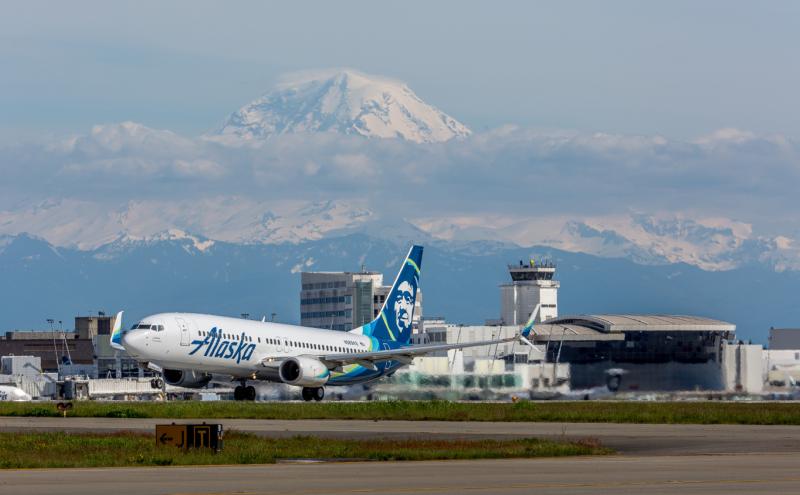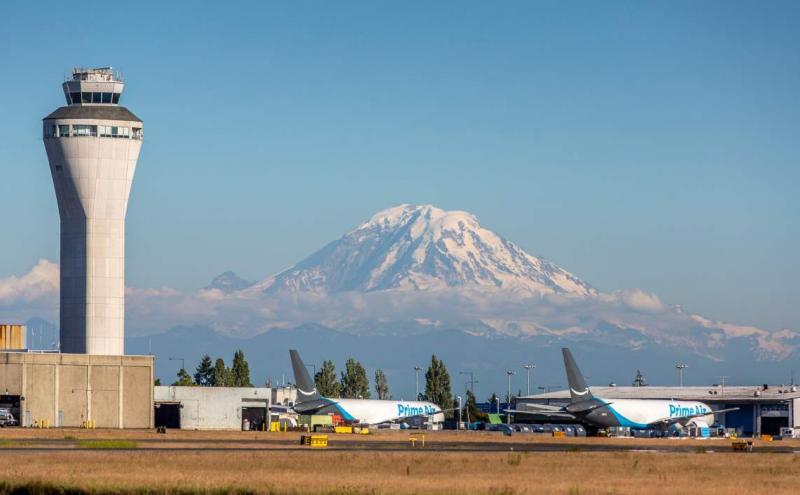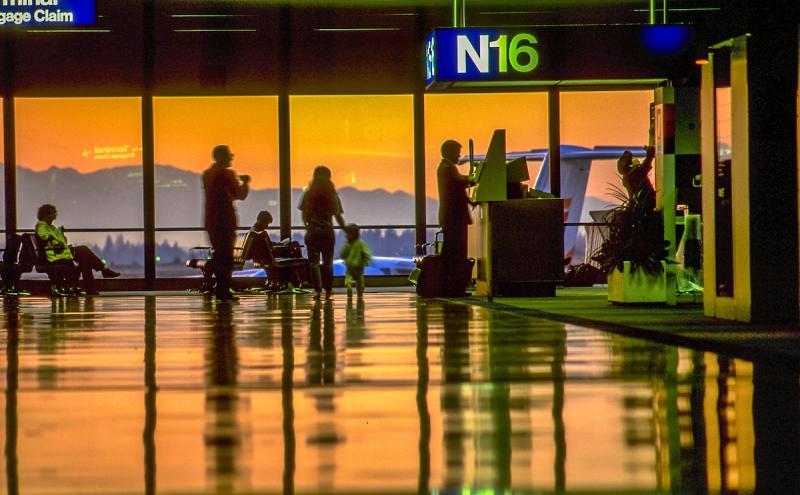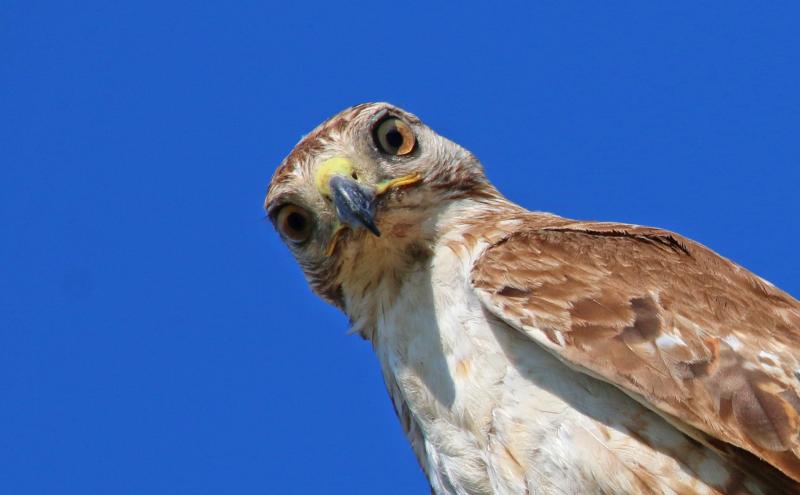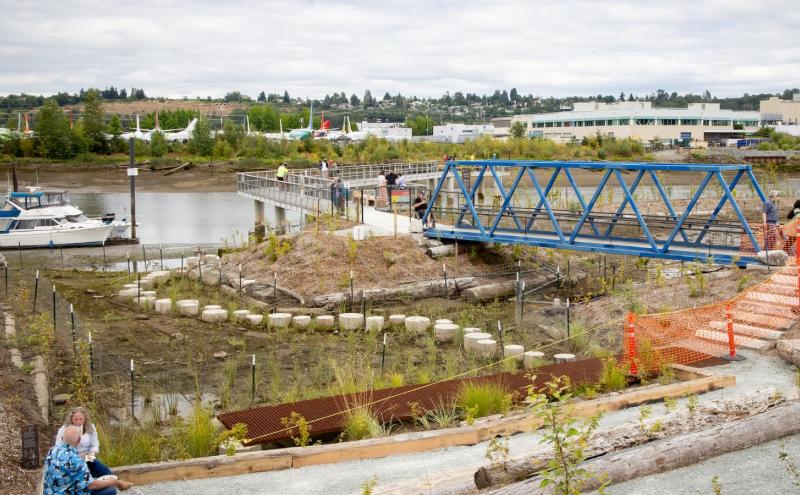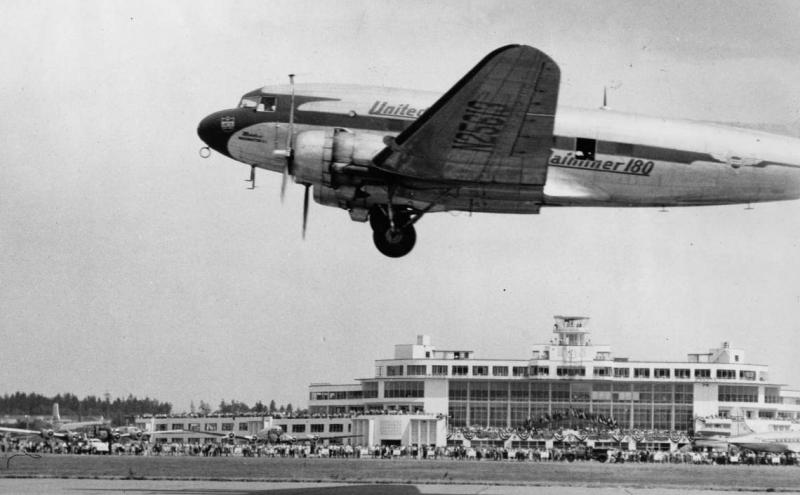
Updated July 7, 2023
Happy 74th Birthday Seattle-Tacoma International Airport (SEA)! We don’t think you look a day over 65 and your new hardware has just put you back in your prime. Here’s a look back on where you’ve been and a glimpse of where you’re going.
Growth
Then
1949
SEA Airport was dedicated on July 9, 1949. The original building cost $3,200,000 and was designed for 900 passengers per hour. The lobby in 1949 is shown below.
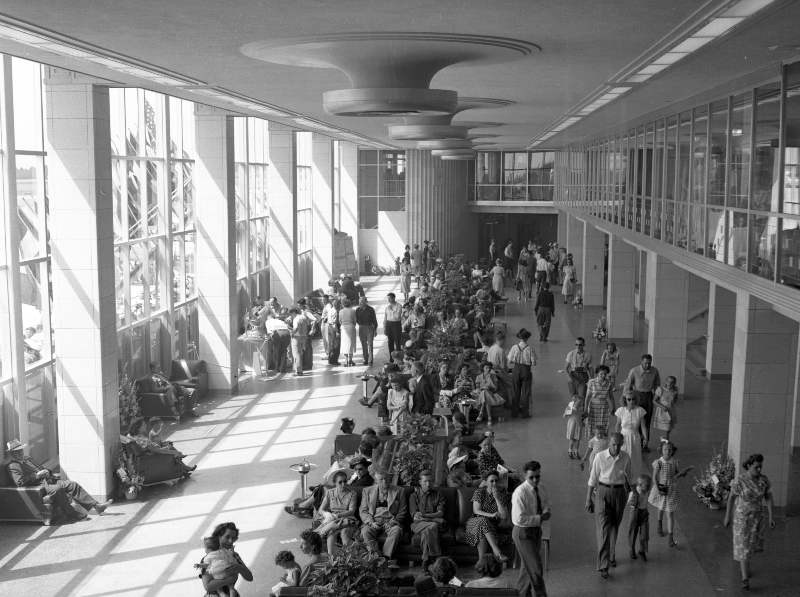
1954
SEA Airport's annual passenger count hits the one million passenger mark for the first time.
1962
With the World’s Fair of 1962, passenger levels jumped to two million. The terminal train is shown in the 1970s.
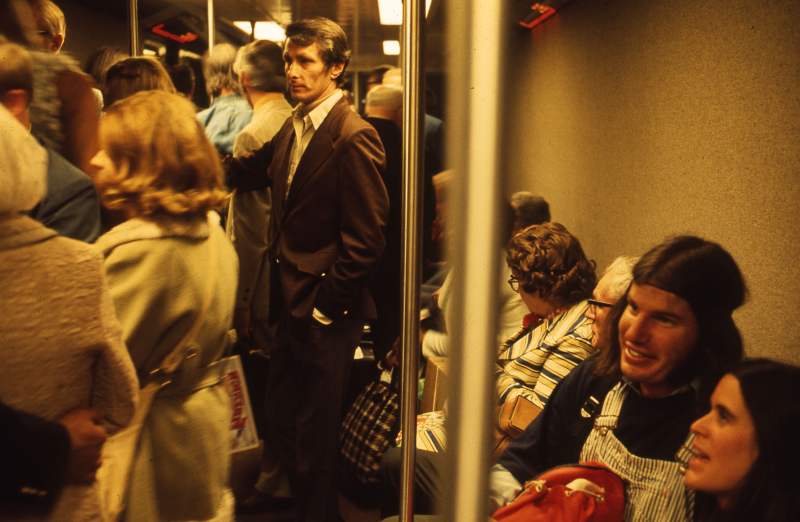
1987
SEA was ranked the 19th busiest airport in the country.
2010
The airport was the 16th busiest in the nation
2016
SEA is the ninth busiest in the nation
2018
- 49.8 million passengers traveled through SEA Airport
- An average of 136,000 passengers year-round
- If we were a city, SEA would be the sixth largest city in the state of Washington behind Bellevue
- The summer months of June through August are the busiest, with one-third of our total passengers and an average of nearly 170,000 travelers per day
- The airport is the eighth busiest and the fastest-growing airport in the nation
2019
- $3.7 billion in improvements made the airport more efficient
- This year was a record high with 51.8 million passengers
2020 - 2021
In 2020, SEA was one of the the fastest-growing airports in the nation. In March 2020, that came to an abrupt halt with the historic global COVID-19 pandemic.
- April 2019 saw 4,033,516 passengers come through the doors
- By contrast, April 2020 dwindled to 259,153 passengers, a more than 3,774% decrease
Throughout the pandemic, SEA never closed its doors and was open and operating for essential travel and air cargo for essential supplies.
2022
SEA earned the travel industry’s prestigious 4-Star Skytrax Airport Rating and designation as the Best Airport in North America focused on customer-centered travel with better services, facilities, and amenities.
The iconic window wall in the Central Terminal re-opens, along with new restaurants like Salty's at the SEA and a brighter look.
SEA passenger volume totaled 45.9 million in 2022 – down just 11% from 2019 – with a forecast to reach pre-pandemic traveler volumes in 2024.
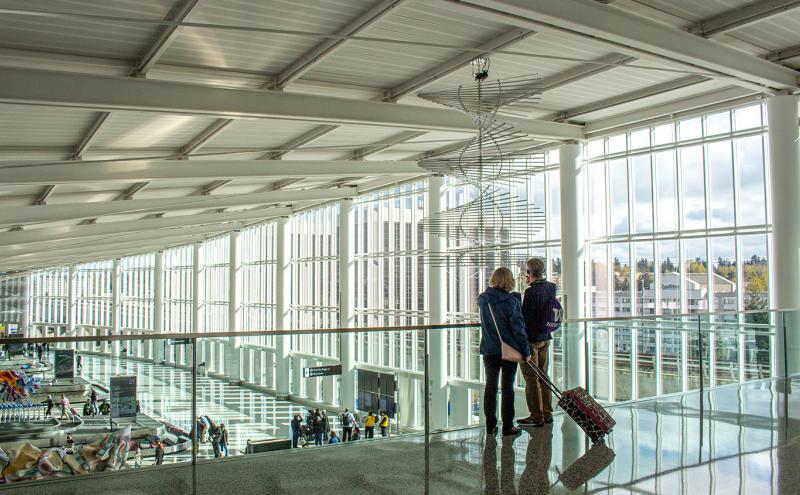
SEA Airport opened a new, expanded International Arrivals Facility (IAF) to significantly enhance the international passenger experience, advance the Puget Sound region as a leading tourism and business gateway, and serve the traveling public well into the future. The IAF is the most complex capital development program in the history of the 71-year-old airport and significantly improves the arrival process for international passengers without adding new gates. The former 1970s-era facilities could not accommodate Seattle’s growing demand for international travel.
The IAF includes exciting new elements:
- 450,000-square-foot grand hall for baggage claim and customs processing
- 85-foot-high aerial walkway that directly connects passengers from the S Concourse (formerly South Satellite) to the Grand Hall
- New international corridor connecting arriving international passengers on A Concourse
Future
The Central Puget Sound region will grow by an additional one million people by the year 2035 and the demand for travel will continue to grow.
Envision the future of SEA Airport with more of what you know and love, plus more of what you need and want. The infrastructure needs modernization to meet that vision. While recent projects in the Central Terminal, N Concourse, and International Arrivals Facility created or modernized approximately 1 million square feet, many remaining facilities across the airport were built for fewer passengers and older building standards.
A new suite of capital projects, brought together under Upgrade SEA, will update system efficiency, sustainability and technology, improve accessibility, and add more space for passengers.
Flights
Then
September 1, 1947
Regular scheduled commercial air traffic officially began from SEA by Northwest Airlines and Western Airlines with 10 flights daily. The photo below is Western Airlines' first flight of the Convair in 1948.
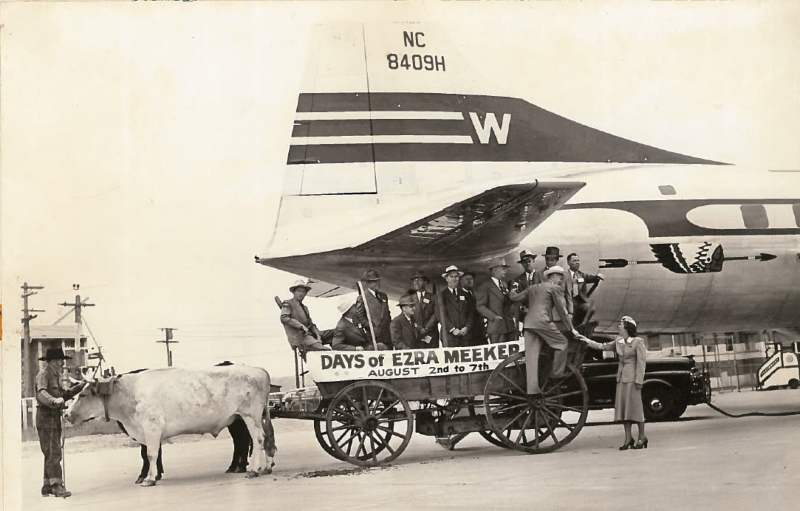
1984
By this time, there were 28 major airline carriers.
2019
- The 31 airlines offer 91 nonstop domestic and 29 nonstop international destinations.
- The airport averages 1,300 operations per day, takeoffs and landings.
2022
In 2022, SEA added four brand new international services:
- Turkish Airlines to Istanbul
- Air Canada to Montreal
- Finnair to Helsinki
- Air Tahiti Nui to Tahiti
Now
2023
So far, there have been two new service announcements from SEA Airport:
- WestJet to Edmonton
- Air Tahiti Nui’s nonstop service to Paris
Overall, 44 international services are currently in operation at SEA, providing nonstop flights to 29 unique international destinations on 25 airlines.
Sustainability
Then
1993
SEA established the Waste Minimization program that keeps more than one-third of all airport trash out of the landfill.
2000
SEA Airport was a national pioneer in starting a recycling program for airlines. Before the recycling program, SEA had one large dumpster where all plane waste went. With the support of Alaska Airlines, the largest airline at the airport, the program shifted to charging airlines for garbage disposal. But recycling was free.
2009
SEA set a goal to recycle 50 percent of solid waste generated at airport-operated facilities.
Now
2021
The North Satellite Modernization project is completed using green building practices and materials:
- 76 percent of construction waste was tracked and diverted from landfills, totaling 20,000 tons. That's the equivalent of 100 blue whales in diverted waste!
- Harvesting rainwater to flush the toilets
- Efficient LED lighting
- Ceiling constructed using Forest Stewardship Council (FSC) certified beechwood and sourced from responsibly managed forests.
- Heating the facility with renewable natural gas (RNG)
- Leadership in Energy and Environmental Design (LEED) Silver certification from the U.S. Green Building Council
2023
One step closer to sustainable aviation fuel! Washington state Governor Jay Inslee signed new legislation to create policy and per-gallon price incentives for the production and use of Sustainable Aviation Fuel (SAF) in Washington. The Port of Seattle advocated for the law as part of its multi-year push to accelerate the deployment of locally-produced SAF at Seattle-Tacoma International Airport.
The new law creates a per-gallon incentive for SAF with lifecycle greenhouse gas emissions that are at least 50 percent lower than traditional jet fuel. The incentive increases for each one percent reduction in lifecycle greenhouse gas beyond 50 percent, up to a potential incentive of $2 per gallon. Incentives will begin when a manufacturing facility becomes capable of producing at least 20 million gallons per year. Currently there is no continuous SAF production occurring in Washington state.
Future
2028
SEA is setting sustainability goals at a time when we’re taking on the skyrocketing travel demands of the booming region. Our goal is to power every flight fueled at SEA with sustainable aviation fuel by 2028.
Wildlife and Habitat
Then
SEA Airport was built on land that housed facilities for raising domestic rabbits, a frog farm, a mushroom farm, and a dog kennel.
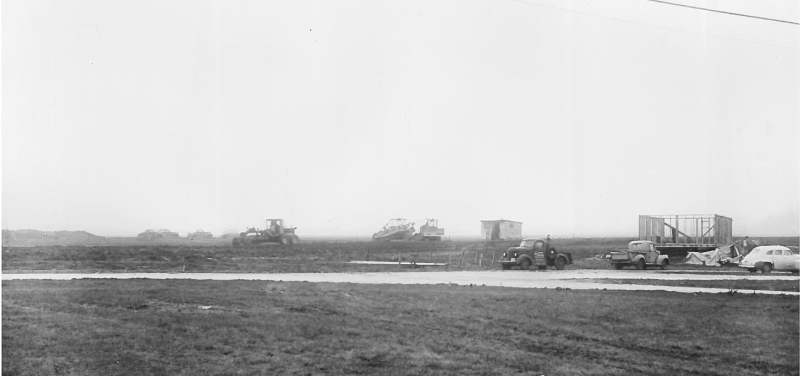
1966
An expensive bird purchased for the Woodland Park Zoo flew around the basement, then escaped out of a vent.
1976
SEA was the first in the United States to hire a full-time biologist to address problems posed by birds that live and migrate in the areas surrounding the airport.
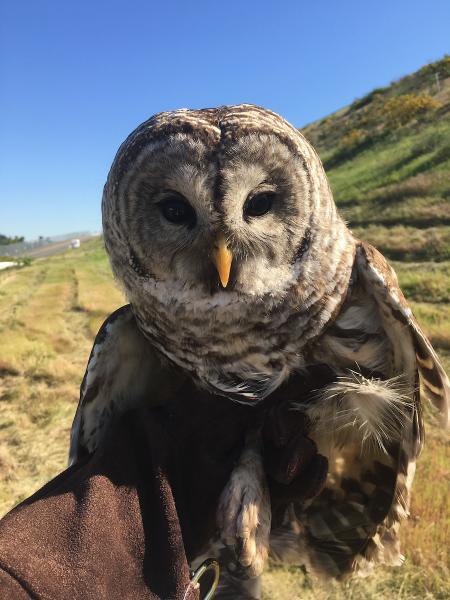
2007
In August 2007, SEA became the world's first airport to use avian radar in a long-term monitoring effort to detect potentially hazardous bird activity on and near an airport. In close collaboration with the University of Illinois, Center of Excellence for Airport Technology (CEAT), Sea-Tac now uses three Sicom-Accipiter radars continuously like a powerful pair of eyes that see much farther and higher than human observers, who are limited to viewing only during daylight hours.
2013
SEA became one of three airports in the nation that created a home for bees. The airport launched plans to convert 1,000 acres into a home for 500,000 bees. The program was a partnership with the Port of Seattle, local non-profit The Common Acre, and The Urban Bee Company.
2019
The Port has created, restored, or enhanced 177 acres of wetlands and buffers near SEA Airport, including planting approximately 350,000 native trees and shrub
Now
2023
Baby raptors are seriously cute. And they need to stay that way. Airplanes and birds are not an ideal or safe combination, so it’s best that they spread their wings elsewhere. The wildlife management team rehomes these birds and other animals for the benefit of people, planes, and birds.
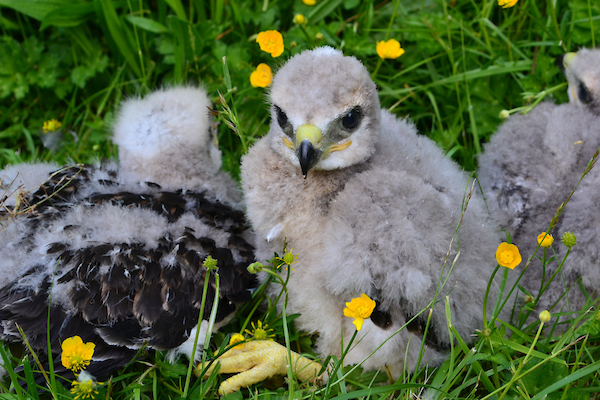
SEA Firsts
Then
May 31, 1945
First transcontinental flight by Northwest Airlines coast to coast in a DC-3 that took 17 hours.
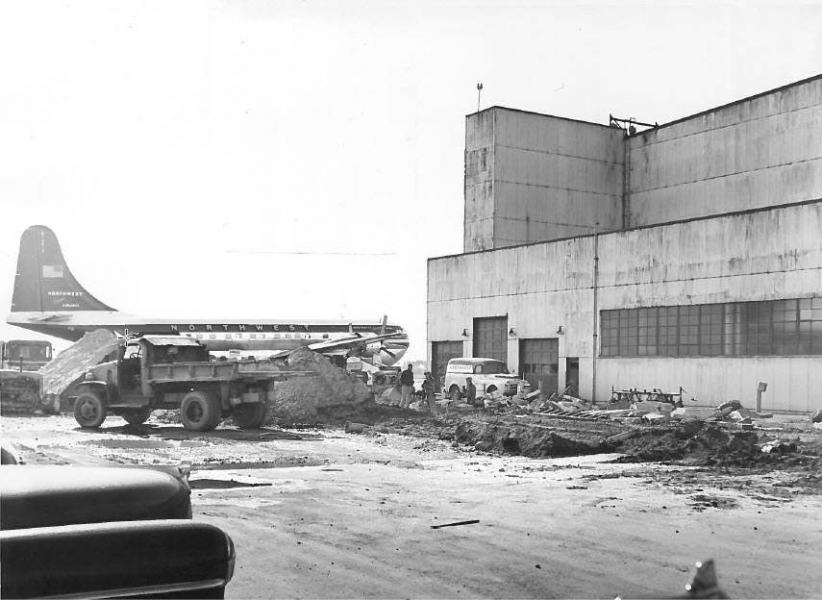
October 3, 1959
The First regular jet service started in 1959 when a Pan Am 707 took off for Honolulu. That same year, Japan Airlines became the first Asian-flag airline to operate at SEA when its DC-7 Supercourier arrived from Tokyo on June 28.
July 1, 1970
With the airport expansion, the first 747 service at SEA connected Seattle, Chicago, Tokyo, and New York.
1976
Did you know SEA Airport was the first in the country to have a wildlife biologist on staff? Birds and airplanes don't mix, so the airport's team re-homes birds who get too close to the planes. In 1976 we were the first U.S. airport to employ a full-time biologist and to develop an ecological approach to maintaining aviation safety and protecting wildlife. This position has evolved to promote wildlife conservation of certain non-hazardous species as well.
November 17, 1984
The Supersonic Concorde departs SEA for the first time.
2018
For the first time ever, more than 5 million passengers go through SEA in one month during July and August 2018
2019
SEA becomes the first airport in the U.S. to offer the Sunflower lanyard to passengers with non-visible disabilities such as autism, PTSD, or hearing loss. First pioneered at London's Gatwick International Airport in 2016, the Sunflower lanyard communicates that passengers wearing it may need extra help while traveling.
2021
SEA Airport is the first airport in the nation to offer free expedited entrance to general security lines through SEA Spot Saver.
2022
SEA Airport finishes construction of the International Arrivals Facility with an 85-foot high glass walkway above the taxiway and planes traveling underneath and views of Mt. Rainier. The Pacific Northwest now has the world's largest structure over an active taxiway
2023
SEA Airport celebrated the one-millionth user of SEA Spot Saver
The first all-gender restroom opens at Seattle-Tacoma International Airport in July 2022. Located between gates D1 and D2, this multi-user, all-gender restroom is among the first of its kind to be introduced in a North American Airport. The ADA-accessible restroom is inclusive to all, with full-door stalls, a family restroom, a private urinal room, and a shared washing station. The Port worked with a community stakeholder group during the restroom design.
Inclement Weather
Then
1990
SEA became the first airport to receive FAA approval for low-visibility flights.
Now
2019
During the historic snowstorm in February, SEA Airport removed three million cubic yards of snow from airport ramps and runways. That’s enough snow to fill 48 Olympic-sized swimming pools.
- Watch a video on Facebook on how the airport deals with low visibility conditions
Energy Efficiency
Then
September 1973
SEA worked to reduce electricity by 15 percent. This was shortly after Seattle introduced the Kill-a-Watt campaign on July 17, 1973.
The new and modern North Satellite was built. Read five fun facts.
October 2020
SEA became the first airport in the country to purchase thermal renewable natural gas (RNG), a low-carbon natural gas alternative produced from landfill waste, to heat the airport terminal. This switch from higher carbon fossil fuels to renewable waste-derived fuel enabled the Port to reduce its carbon emissions by 50 percent in 2021, a goal that was initially targeted for 2030.
Over the 10 year lifespan of the contract, using RNG at SEA Airport will remove the emissions equivalent of:
- Heating 40,000 Seattle homes
- Taking 24,000 passenger vehicles off the road
Now
The Port’s goal is to be the greenest and most energy-efficient airport in the country.
The North Satellite modernization project will be the third LEED Silver-certified building at the airport. The environmentally friendly facility — using sustainable design, mitigating construction impacts, and operating the building with energy savings — is designed to maximize the health and productivity of travelers and staff, use fewer resources, reduce waste and negative environmental impacts, and decrease life cycle costs to operate the building.
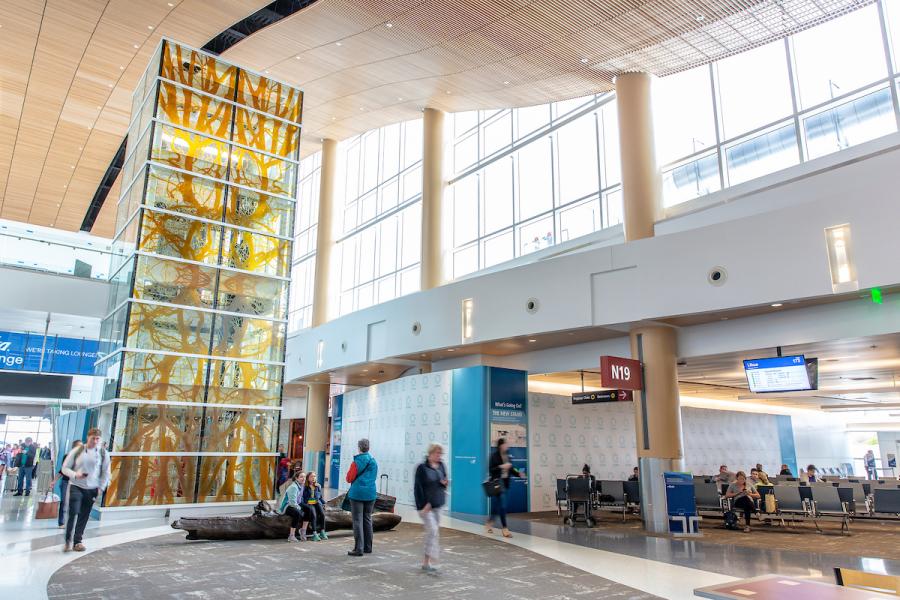
Air Cargo
Then
After 1949
The Flying Tiger Line flew commercial air cargo routes through 1988. This image shows a Flying Tiger DC-8 being loaded in the 1970s.
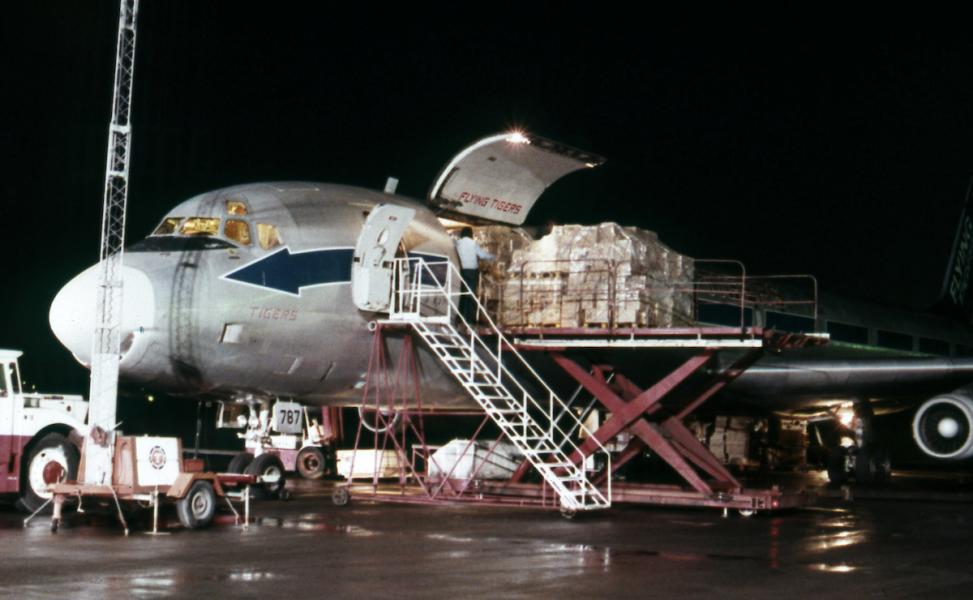
1955

September 2, 1966
The first scheduled commercial polar flight began on the “Knud Viking” between Copenhagen and Seattle. The next day’s return flight to Copenhagen carried 2,400 pounds of fresh King salmon from Seattle to Denmark.
1987
Air cargo volumes were 259,000 tons, ranking 16th in the U.S. and 29th in the world.
2017
SEA was ranked 18th among U.S. airports by air cargo tonnage in 2017
- 432,315 metric tons of air cargo was handled through Sea-Tac in 2018
- 59 percent of international air freight travelled to/ from Asia, 30 percent to/from Europe
Fish still fly with the Alaska Airlines Salmon-Thirty-Salmon bringing in 18,000 pounds of first Copper River Salmon every year.
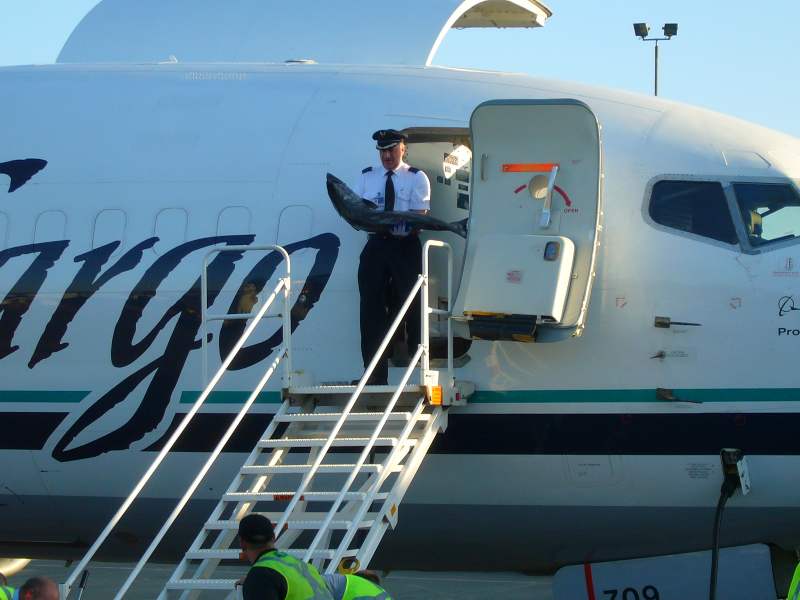
And SEA remains a major cargo hub to get in-demand Washington products like seafood and fruit to global markets.
- Watch how Taylor Shellfish gets its products to global markets quickly through SEA Airport.
2020
SEA recorded its ninth consecutive year of air cargo growth in 2020, increasing 0.24% to 454,584 metric tons, despite the COVID-related impacts on passenger flight activity.
Air cargo tonnage remains at 99% of its all-time record level of 457,071 metric tons set in 2000.
Records in 2020
- Domestic Air freight record of 351,352 metric tons, primarily driven by increased e-commerce activity
- SEA experienced an 8.6% increase in all cargo freighter flight activity
Now
Air cargo has moderated to 114,942 metric tons in 2022.
Transportation
Then
1955
The first parking lot opened for 527 cars. The 1968 parking shuttle is below.
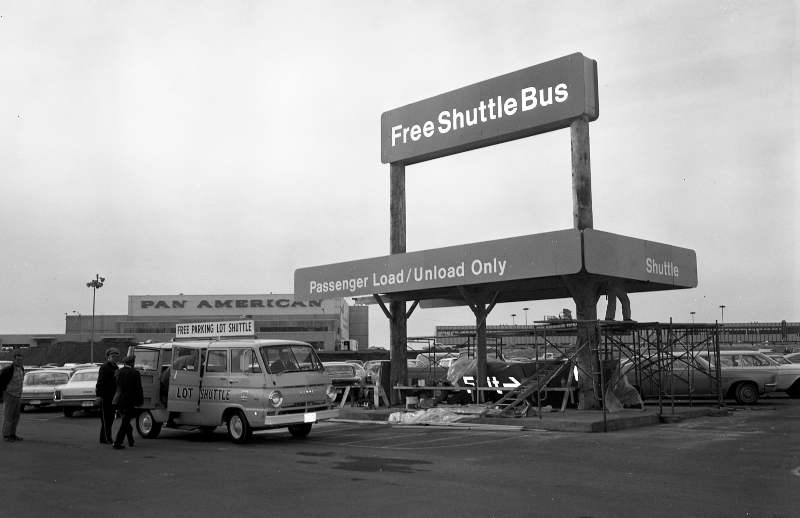
The SEA Airport parking garage is the second largest parking lot (under one roof) in the world. The photo below is the parking garage in 1981.
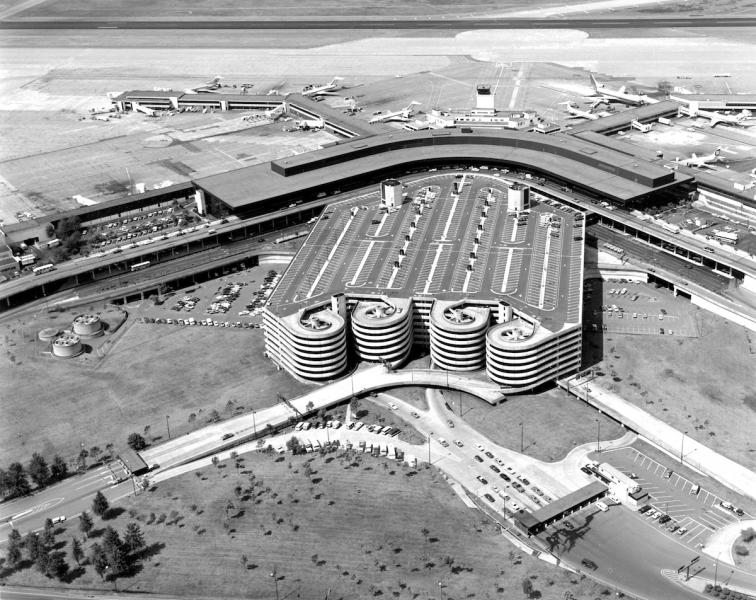
Now
The SEA parking garage got a boost from technology. With over 12,000 stalls spread across eight floors in the Seattle-Tacoma International Airport (SEA) garage, finding an open stall quickly can be a challenge. With the Park Assist APGS, parkers can find an open stall quickly using a system of wayfinding signage, smart sensors, and LED lights to designate available or occupied stalls. Sensors and lighting indicate available stalls with green lights. And EV charging capacity has also increased by nearly 50%.
The addition of Pre-booked parking allows you to pay for your parking in advance and is a safe, "contact-free" option. Drive your own vehicle, and scan your booking QR code on your phone at garage entry and exit. There's no need to pull (or lose) a ticket, and no trip on a shuttle bus.
Now, travelers have many choices on how to get to the airport like:
- Link light rail and buses
- Biking, with places to store and park your bike
- Ridesharing
- Airport shuttles

